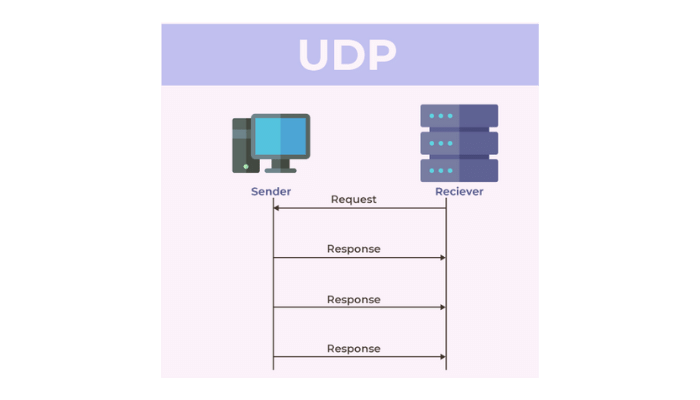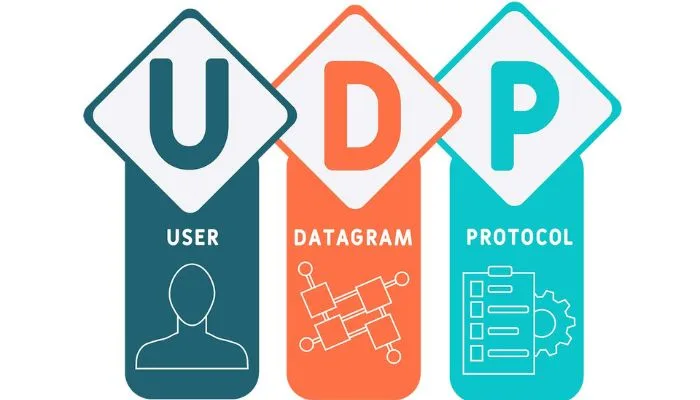What is User Datagram Protocol (UDP)?
User Datagram Protocol, commonly known as UDP, operates at the transport layer and is responsible for delivering data packets from one source to a destination. Unlike TCP, UDP is a connectionless and unreliable protocol. This means that it does not establish a connection before sending data and does not guarantee the delivery of data packets.
UDP is a connectionless and unreliable transport protocol that operates on the Internet Protocol (IP) network layer. Unlike its counterpart, Transmission Control Protocol (TCP), UDP does not establish a dedicated connection between two endpoints before transmitting data. Instead, it simply sends data packets, called datagrams, to the destination without any guarantee of delivery or order.
What is UDP used for?
UDP is commonly used for applications that prioritize speed and efficiency over reliability. It is ideal for real-time applications such as video streaming, online gaming, VoIP (Voice over IP), and DNS (Domain Name System) services. These applications can tolerate some packet loss or delay, making UDP a suitable choice.
How Does UDP Work?

Now that we’ve touched upon the technical aspects let’s explore how UDP actually works. UDP is connectionless and best suited for applications where speed and efficiency are more critical than reliability.
UDP works by encapsulating data into datagrams and sending them across the network. The sender generates a datagram and attaches the UDP header. The datagram is then transmitted to the destination without establishing a connection. Upon receiving the datagram, the receiver extracts the data and uses the information in the header to process it. UDP does not provide any flow control or error recovery mechanisms, which means it is up to the application layer to handle these aspects.
UDP works on a “fire and forget” principle. When a sender wants to transmit data, it simply packages the data into UDP packets and sends them off to the recipient’s IP address and port. No handshakes, acknowledgments, or retransmissions occur, making UDP incredibly fast.
UDP Header Composition
The UDP header consists of four main fields: source port, destination port, length, and checksum. The source port represents the port number on the sender’s machine, while the destination port indicates the port number on the receiver’s machine. The length field specifies the length of the UDP header and data, and the checksum field is used for error detection.
- Source Port: The source port field in the header identifies the sender’s port number, ensuring that the recipient knows where the data originated.
- Destination Port: This field specifies the port number at the receiving end, directing the data to the appropriate application or service.
- Length: The length field indicates the length of the UDP header and data. It helps the recipient understand the size of the incoming packet.
- Checksum: The UDP header includes a checksum that is used for error detection. While UDP does not guarantee data delivery, this checksum helps identify corrupted packets.
Applications of UDP
UDP is widely used in various applications. Some of the notable ones include:
- Streaming media: UDP is commonly used for real-time streaming of audio and video content. Services like YouTube, Netflix, and Spotify utilize UDP for efficient media delivery.
- Online gaming: UDP’s low latency and fast transmission make it ideal for online gaming, where real-time interaction is essential.
- VoIP: Voice over IP services, such as Skype and WhatsApp, utilize UDP for real-time voice communication.
- DNS: UDP is used for domain name resolution. DNS queries and responses are typically transmitted using UDP.
UDP vs. TCP
UDP and TCP are two different transport protocols with distinct characteristics. While UDP is connectionless and unreliable, TCP is connection-oriented and provides reliable data delivery. TCP guarantees data integrity, ordering, and flow control, making it suitable for applications that require reliable data transmission. UDP, on the other hand, sacrifices reliability for speed and efficiency.
| Aspect | UDP (User Datagram Protocol) | TCP (Transmission Control Protocol) |
|---|---|---|
| Connection | Connectionless – No formal connection setup. | Connection-oriented – Establishes a connection before data transfer. |
| Reliability | Unreliable – Does not guarantee data delivery. | Reliable – Ensures data delivery with error-checking and retransmission. |
| Order | Unordered – Packets may arrive out of order. | Ordered – Packets arrive in the correct order. |
| Overhead | Low overhead – Minimal additional data in packets. | Higher overhead – Additional control information for reliability. |
| Latency | Low latency – Minimal delay in data transmission. | Higher latency – More time spent on connection setup and error-checking. |
| Applications | Real-time applications like video streaming, online gaming, VoIP. | Applications where data integrity is crucial, such as web browsing and file transfers. |
| Broadcast | Suitable for broadcasting data to multiple recipients. | Not suitable for broadcasting. |
| Error Handling | No automatic error correction or retransmission. | Automatic error correction and retransmission of lost packets. |
| Complexity | Simple and lightweight. | Complex with extensive error-checking mechanisms. |
| Example Ports | Commonly uses ports like 53 (DNS) and 123 (NTP). | Commonly uses ports like 80 (HTTP) and 443 (HTTPS). |
UDP is preferred for applications that require speed and low latency, even if it means sacrificing reliability and data integrity. TCP, on the other hand, is ideal for applications where data must be delivered accurately and in the correct order, even if it introduces some latency and overhead. The choice between UDP and TCP depends on the specific needs of the application.
Advantages & Disadvantages of UDP
Advantages of UDP
- Speed: UDP is lightning-fast. It doesn’t waste time establishing a connection or checking if data packets arrive in the correct order. This speed makes it ideal for real-time applications.
- Low Overhead: Unlike other protocols that add extra information to each data packet for error-checking and reliability, UDP keeps things minimal. This means less data is added to each packet, allowing for faster transmission.
- Low Latency: Latency refers to the delay between sending and receiving data. With UDP, this delay is minimal, making it perfect for applications where instant communication matters, like online gaming and video conferencing.
- Efficiency: UDP doesn’t bog down the network with additional control messages and acknowledgments. It simply sends data packets, making it efficient for tasks like live streaming and voice calls.
Disadvantages of UDP
- Unreliable: UDP does not guarantee delivery or order of packets, which can be problematic for certain applications.
- No congestion control: Unlike TCP, UDP does not have built-in congestion control mechanisms. This means that UDP packets can congest the network, leading to increased packet loss.
- No error recovery: UDP does not provide error recovery mechanisms. If a packet is lost or damaged during transmission, it will not be retransmitted.
UDP is a lightweight and efficient transport protocol used for real-time applications that prioritize speed over reliability. It is widely employed in streaming media, online gaming, VoIP, and DNS services. However, due to its unreliable nature, UDP may not be suitable for all types of applications. Understanding the strengths and limitations of UDP is essential for designing and implementing efficient network solutions.

